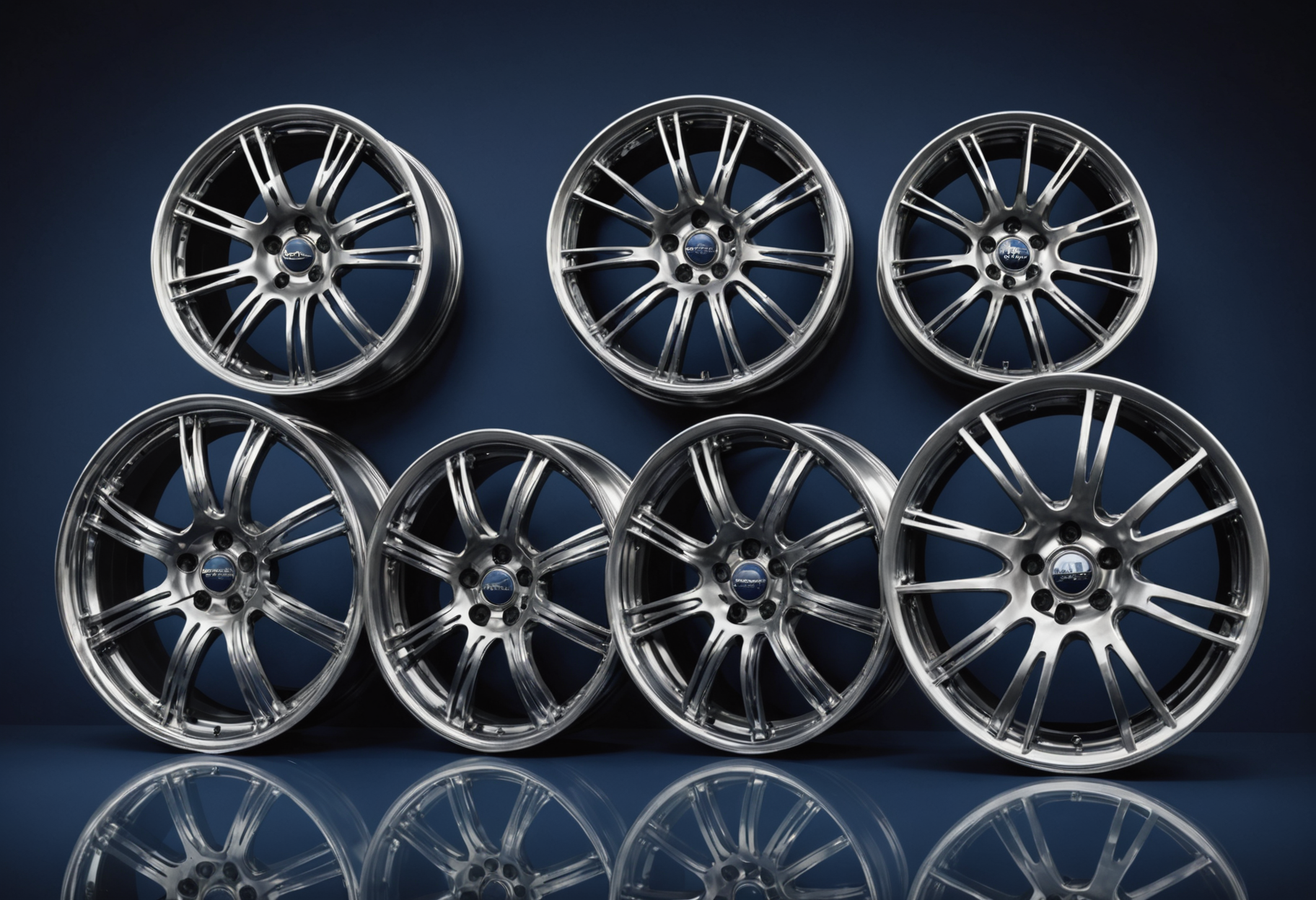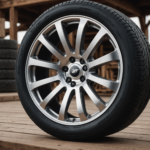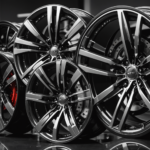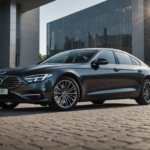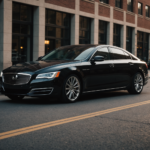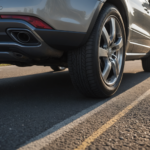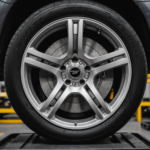Wheels are often overlooked components of automotive design, but they play a crucial role in vehicle performance, aesthetics, and safety. As car manufacturers strive for innovation, wheel designs have undergone significant transformations over the years. This article delves into the evolutionary path of wheel designs in modern cars, examining how changes in technology, materials, and design philosophies have shaped the wheels of today.
The Historical Context of Wheel Design
The history of the wheel dates back thousands of years, with the earliest documented use around 3500 BC. Initially simple wooden discs, wheels have evolved dramatically through various cultures and technologies. In the automotive world, the shift from horse-drawn carriages to motorized vehicles in the early 20th century marked a turning point in wheel design.
Early Automotive Wheels
In the early days of automobiles, wheels were made from wood, reinforced with metal bands. These simple designs prioritized functionality over aesthetics. As cars gained popularity, manufacturers began experimenting with materials and shapes to improve performance and durability.
Steel Wheels
By the 1920s, steel wheels became the industry standard due to their strength and weight-bearing capacity. Initially, these wheels were often stamped from sheets of steel, resulting in a heavy but durable component. However, their solid black appearance left much to be desired in terms of style.
The Rise of Alloy Wheels
Alloy wheels emerged in the mid-20th century as a lighter and more stylish alternative to traditional steel wheels. Composed of aluminum or magnesium alloys, these wheels offered a blend of performance and aesthetic appeal.
Benefits of Alloy Wheels
- Weight Reduction: Alloy wheels are significantly lighter than their steel counterparts, improving fuel efficiency and handling.
- Heat Dissipation: Their material composition allows for better heat dissipation, enhancing brake performance.
- Design Variability: Alloy wheels come in various styles and finishes, allowing manufacturers and consumers to personalize their vehicles.
Styles of Alloy Wheels
Alloy wheels can be categorized into different styles based on their manufacturing process:
- Cast Alloy Wheels: Made by pouring molten metal into a mold. They are cost-effective and come in various designs.
- Forged Alloy Wheels: Created by shaping solid metal under high pressure. They are lighter and stronger but more expensive.
- Multi-piece Wheels: Composed of separate sections that can be replaced individually for customization and repair.
Technological Innovations in Wheel Design
As technology has advanced, so too has the engineering behind wheel design. The introduction of computational modeling and material science has led to the development of wheels that are not only lighter and stronger but also safer and more environmentally friendly.
Tire Pressure Monitoring Systems (TPMS)
Many modern cars are equipped with Tire Pressure Monitoring Systems (TPMS), which have a direct impact on wheel design. TPMS utilizes sensors to monitor tire pressure, warning drivers of any significant deviations. This tech necessitates specific adjustments in wheel design, ensuring that sensors are accommodated without compromising structural integrity.
Run-flat Tires
Run-flat tires enable vehicles to continue operating even after a puncture. This technology has influenced wheel design, as wheels must accommodate the unique structure of run-flat tires, which have stiffer sidewalls and require specific rim shapes.
Eco-Friendly Wheel Designs
In recent years, there has been a growing focus on sustainability in automotive manufacturing. Wheel designs are now being crafted with eco-friendly materials and processes, aligning with the global push towards greener alternatives.
Recycled Materials
Some manufacturers have begun using recycled aluminum in their wheel production. This not only reduces waste but also lowers the energy required in the manufacturing process, presenting a more sustainable option.
Lightweight Designs for Electric Vehicles
As the automotive industry shifts towards electric vehicles (EVs), wheel designs are evolving to enhance efficiency. Lighter wheels can significantly impact battery life, making advancements in materials and designs crucial for EV manufacturers.
Aesthetics and Customization Trends
The visual appeal of wheels has become increasingly important in the design of modern vehicles. Consumers are drawn to stylish wheels that enhance the overall look of their cars.
Popular Aesthetic Trends
- Multicolor Finishes: Manufacturers are offering a wide range of colors, including matte and gloss finishes, to enable greater personalization.
- Complex Designs: Intricate patterns and multi-spoke designs have become popular, allowing for unique interpretations of traditional wheel shapes.
- Floating Center Caps: This design feature gives the appearance that the logo is floating as the wheel turns, providing a modern aesthetic.
Aftermarket Wheels
Aftermarket wheels offer enthusiasts the chance to fully customize their vehicles. These wheels come in various styles and sizes, allowing for a level of personalization that factory options cannot provide.
The Future of Wheel Design
As the automotive landscape continues to change, wheel design is likely to follow suit. The integration of smart technology, lightweight materials, and sustainable practices will shape the wheels of tomorrow.
Smart Wheels
The concept of smart wheels, equipped with sensors to monitor performance, pressure, and even tread wear, is on the horizon. These wheels could communicate with the vehicle’s onboard systems, providing real-time data that could enhance safety and efficiency.
3D Printing Technologies
Advancements in 3D printing offer exciting possibilities for wheel manufacturing. This technology could facilitate the production of highly customized wheels with intricate designs that are difficult to achieve using traditional methods.
Conclusion
The evolution of wheel designs in modern cars illustrates the intersection of functionality, aesthetics, and innovation. From early wooden wheels to advanced alloys and smart technology, the journey of wheel design reflects broader trends in automotive engineering. As vehicles continue to evolve towards greater efficiency and personalization, so too will the wheels that support them, ensuring they remain a vital element of automotive design for years to come.
| Feature | Alloy Wheels | Steel Wheels |
|---|---|---|
| Weight | Lightweight | Heavy |
| Cost | More Expensive | Less Expensive |
| Durability | Durable, but can be damaged | Very durable |
| Aesthetics | Multiple design options | Limited design options |
| Heat Dissipation | Excellent | Good |
This HTML code contains a comprehensive article, capturing the evolution of wheel designs in modern cars, formatted with appropriate headers and structured content. The article addresses historical context, technological advancements, aesthetic trends, and future prospects in wheel design while maintaining SEO best practices.

